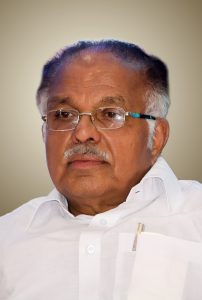Industrial Policy, 1991

In order to accelerate Industrial Development in India, and in accordance with the changing circumstances, various industrial policies were declared in the years 1948, 1956, 1977, 1980, and 1985, but in spite of all efforts, the pace and as well as the level of Industrial Development in India, could not be reached according to its need. Therefore, to lift unnecessary restrictions on Industries, under the licensing policy, and to increase their efficiency, development, and technological level, to make Indian goods usable in the competitive global market, on 24th July 1991, in Lok-Sabha the Minister of States for Industries, Mr. P. J. Kurian declared the Industrial Policy, 1991.
Objectives of The Industrial Policy, 1991
- Liberalization of the economy
- Increase employment opportunities
- Encourage foreign assistance and co-partnership
- Making the Public Sector more competitive
- Increase production and productivity, give encouragement to industries
- Liberalization from various government restrictions
- Industrial development of backward areas
- Liberty to the private sector to work independently
- Development of modem competitive economy
- Encouragement of expansion of production capacity
- Increase exports and liberalize (facilitate) imports.
Salient Features
Liberalized Industrial Licensing Policy
Under this policy, except for the 18 industries, the licensing system has been removed for all other industries. Some of those 18 industries, where the licensing system is still mandatory are; Army and Defence, Forest Conservation, Industries engaged in manufacturing goods that are harmful to the Environment, and industries, which are manufacturing luxury goods, for the affluent (extraordinarily rich) class, etc.
Localization Policy
For those industries which are situated in cities, where the population is less than 1 million, industrial permission from the government, to start any industry is not required. In cities having a population of more than 1 million, except for electronics and other pollution-free industries, all industrial units may be 25 kilometers away from the city’s boundary.
Foreign Investment
Provision has been made to invest up to 51 percent by foreign investors in the equity shares of Indian Companies. Earlier, this limit was limited to up to 40% only. This will increase the flow of foreign capital into India and make possible technical exchanges from developed countries.
Workers’ Participation in Management
Under this industrial policy, the emphasis has been laid on safeguarding the workers’ interests. Provision has been made for workers’ participation in management, to manage sick units, and provision has been made to form cooperative societies of workers, to run them.
Role of the Public Sector
Those public sector undertakings which are not doing well at present, but in which there are enough chances of improvement, shall be re-constituted. Public sector undertakings, which are facing a constant financial crisis, shall be kept under observation by the ‘Board of Industrial and Financial Reconstruction’ or by any other institution, which is fixed by the government.
Change in the MRTP Act
In the industrial policy of 1991, major changes have been made in the Monopolistic and Restrictive Trade Practice Act. Companies having an investment of Rs. 100 crores will not be required to take prior Government permission, for opening new subdivisions or expanding the present industry, or for amalgamation of companies. This industrial policy has also eliminated the investment limit, which was fixed by the MRTP Act.
Creation of Productive Capacity
To increase the productive capacity of new industries, all administrative controls have been removed. Industrialists will only have to inform the government of the opening of new units or increase their production capacity.
Promotion of Industries in Rural Areas
To remove the regional imbalances, under this industrial policy, various provisions have been made to encourage industries in rural areas.
Foreign Technology
No prior permission from the government will be required in importing foreign technology, up to the limit of One Crore rupees. Indian companies will be free to negotiate their terms and conditions, with their foreign collaborators, in matters of technology transfers (exchange of technical knowledge).
Reservation of Small-Scale Industries
This policy has stated that the government shall keep giving assistance to small-scale industries. The limit for small-scale industries has been reduced from Rs 3 Crores to Rs. 1 Crore, since 24 December 1999.
EVALUATION OF INDUSTRIAL POLICY, 1991
“Industrial Policy 1991” is also known as “Open Industrial Policy”, because it contains several revolutionary schemes and plans. If we make an analytical study of the specific features of Industrial Policy 1991, it becomes clear that several fundamental changes have been, made, in this policy.
- Liberalization of the industrial licensing system
- Welcoming of foreign capital
- The facility of Import of Technical Know-how
- Exemption of industrial structure from several unnecessary government controls
- Aiming to make Indian industries more competitive at the national and international level
- Safeguarding the interest of workers, etc.
